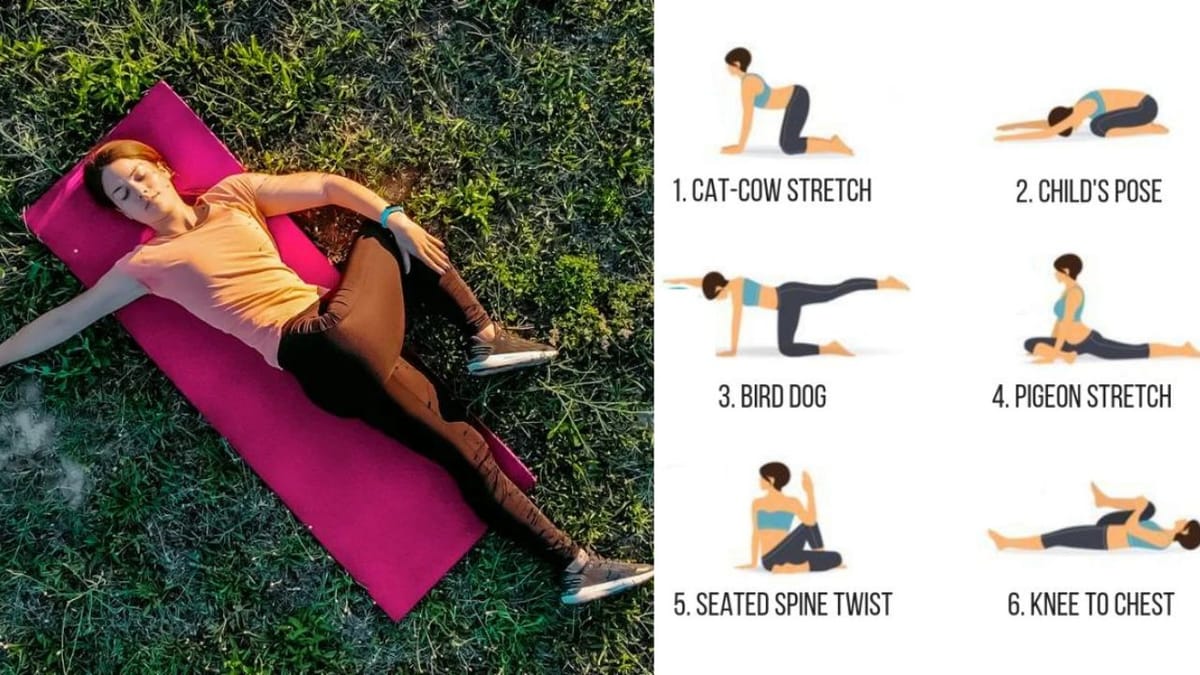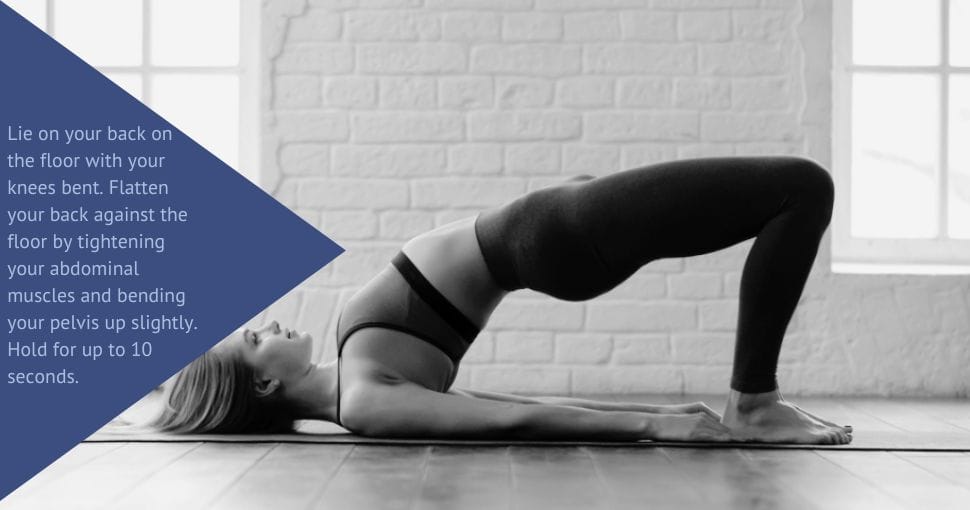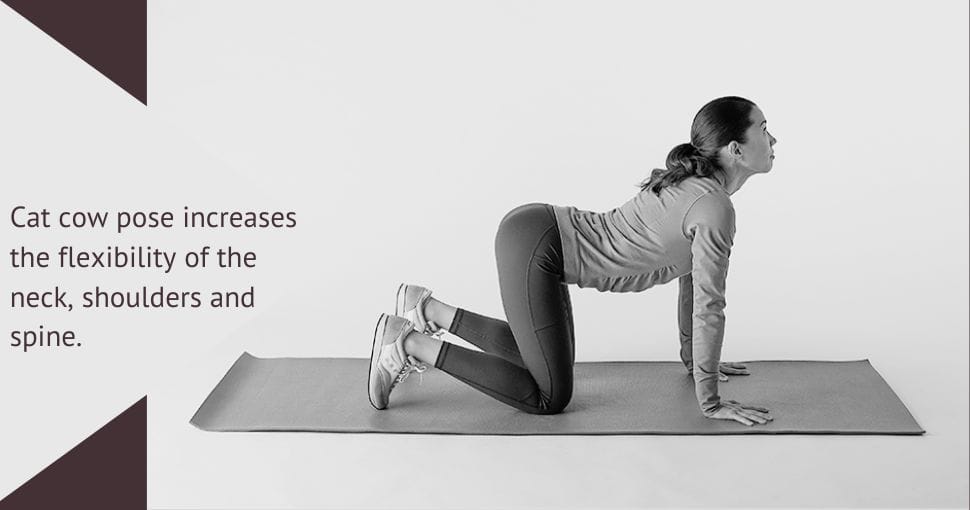Stretches For Lower Back Pain - A Guide to Relief
This guide offers insights into beginner-friendly stretches & empowering individuals to foster flexibility, reduce tension, and nurture a healthier lower back for improved well-being.

Lower back pain is a common ailment affecting millions of people worldwide. Whether it's due to a sedentary lifestyle, an injury, or chronic conditions, finding relief is often a priority for those suffering. Stretching helps alleviate lower back pain, improve flexibility, and strengthen the muscles that support the spine. In this comprehensive guide, we'll explore various stretches that can help ease your discomfort.
Key Points To Remember
- Stretching can significantly alleviate lower back pain and improve flexibility.
- Consistency in performing back stretches is key to long-term relief.
- Understanding the correct form and technique is crucial to prevent further injury.
Understanding Lower Back Pain
Lower back pain can stem from a variety of causes, including muscle strain, poor posture, and underlying medical conditions. It's important to understand the root cause of your pain before starting any stretching routine. Consulting with a healthcare professional can provide insight into the most effective stretches for your specific situation. Read here for more info.

The Importance of Stretching
Stretching is not just about touching your toes or reaching for the sky. It's a deliberate action that, when done correctly, can enhance muscle elasticity, increase blood flow, and reduce tension in the lower back. Incorporating stretching into your daily routine can be a game-changer for managing lower back pain.
Warm-Up Stretches
Before diving into targeted lower back stretches, it's essential to warm up your body. Gentle movements like walking in place or doing a few minutes of dynamic stretches can prepare your muscles and reduce the risk of injury.
Child's Pose Stretch

This yoga-inspired stretch is excellent for elongating the lower back and relieving tension. Start on your hands and knees, sit back on your heels, and extend your arms forward. Hold the pose for 30 seconds to a minute, breathing deeply to enhance the stretch.
Knee-to-Chest Stretch
Lie on your back with your knees bent and feet flat on the floor. Gently pull one knee towards your chest, hold for 15-30 seconds, and then switch legs. This stretch can help release tightness in the lower back and hips.
Pelvic Tilt Exercise

The pelvic tilt is a subtle yet effective stretch for strengthening the abdominal muscles and stabilizing the lower back. Lie on your back with your knees bent, flatten your back against the floor by tightening your abdominal muscles, and hold for a few seconds.
Cat-Cow Stretch

Transition to all fours for the cat-cow stretch, which improves spinal flexibility and can help relieve tension in the lower back. Alternate between arching your back towards the ceiling and dipping it towards the floor, syncing your movements with your breath.
Seated Spinal Twist
Sitting on the floor with legs extended, cross one leg over the other and twist towards the bent knee, using your opposite arm for leverage. This stretch can help improve spinal mobility and stretch the muscles around the lower back.
Hamstring Stretch
Tight hamstrings can contribute to lower back pain. Stretch them by lying on your back, lifting one leg, and gently pulling it towards you with a towel or your hands. Hold for 30 seconds and switch legs.
Hip Flexor Stretch
Tight hip flexors can also affect the lower back. Kneel on one knee and push your hips forward until you feel a stretch in the front of your hip. Hold for 30 seconds and switch sides.
Sphinx Pose
Lie on your stomach and prop yourself up on your forearms, keeping your elbows under your shoulders. This gentle backbend can help strengthen the spine and open up the chest and shoulders.
Piriformis Stretch
The piriformis muscle, located in the buttock region, can affect the lower back when tight. Lie on your back, cross one leg over the other thigh, and pull the knee towards your chest. Hold for 30 seconds and switch sides.
Incorporating Stretching into Your Routine
Consistency is key when it comes to stretching for lower back pain. Aim to incorporate these stretches into a daily routine, spending at least 10-15 minutes on the exercises.
Precautions and Tips
Always listen to your body and avoid any stretches that cause pain or discomfort. It's better to perform stretches with proper form and a smaller range of motion than to push too hard and risk injury.
When to Seek Professional Help
If your lower back pain persists or worsens, it's important to seek advice from a healthcare professional. They can provide a tailored stretching program and additional treatments if necessary.
Advanced Stretches for Lower Back Pain
Once you've mastered the basic stretches and your flexibility has improved, you can explore more advanced options like the pigeon pose or deeper spinal twists. However, proceed with caution and consult a professional if you're unsure.
Summary
Lower back pain doesn't have to be a constant companion. By incorporating these stretches into your daily routine, you can find relief and improve your overall spinal health. Remember to warm up, focus on form, and be consistent with your stretching practice.
FAQ Section
Q: How often should I stretch for lower back pain?
A: Stretching for lower back pain can significantly reduce discomfort, improve flexibility, and prevent future issues. However, the frequency of stretching depends on the severity of your pain, your overall health, and your daily activities. Here’s a detailed breakdown to help you:
General Recommendation
For most people with mild to moderate lower back pain, stretching 2–3 times a day is sufficient. This includes a morning session to loosen up after sleeping, a midday session to relieve tension, and an evening session to relax muscles before bed. Each session can last about 10–15 minutes.
Acute vs. Chronic Pain
- Acute Back Pain (Temporary Discomfort):
- Stretch gently 1–2 times a day to avoid overstraining the area.
- Focus on movements that relieve pain without causing discomfort.
- Chronic Back Pain:
- Stretch daily or even multiple times a day if your body feels stiff.
- Incorporate low-impact exercises like yoga to complement your stretching routine.
Office Workers or Sedentary Lifestyles
If you sit for long hours, aim to stretch every 1–2 hours during the day. Prolonged sitting can tighten your hip flexors and lower back, so regular movement and stretching help keep your muscles relaxed and aligned.
Best Practices for Stretching
- Warm Up First: Do light movements like walking or gentle twists to prepare your muscles for stretching.
- Be Gentle: Avoid bouncing or overstretching, as this can worsen the pain.
- Hold Each Stretch for 20–30 Seconds: Allow your muscles to lengthen and relax properly.
- Listen to Your Body: If a stretch causes sharp pain, stop immediately and consult a healthcare professional.
Example Stretches for Lower Back Pain
- Child’s Pose: Relieves tension in the lower back and hips.
- Cat-Cow Stretch: Improves flexibility and promotes blood flow.
- Knee-to-Chest Stretch: Reduces tension in the lower back.
- Pelvic Tilts: Strengthens core muscles and alleviates pain.
Consistency Is Key
Stretching is most effective when done consistently. Over time, you’ll notice improved mobility and less back pain. If your pain persists despite regular stretching, consider consulting a physical therapist or doctor for a tailored treatment plan.
Let me know if you'd like detailed descriptions of the stretches or tips for customizing a stretching routine!
Q: Can stretching make lower back pain worse?
A: Yes, stretching can sometimes make lower back pain worse if it's not done correctly or if you have an underlying condition that stretching might aggravate. Here's a detailed explanation:
When Stretching Can Make Back Pain Worse
- Improper Technique
Poor form during stretching can strain your muscles, ligaments, or joints, leading to increased discomfort. For example, overstretching or bouncing during a stretch can worsen the pain. - Underlying Conditions
If you have specific back issues like herniated discs, sciatica, or spinal stenosis, certain stretches can exacerbate the condition. Movements that put excessive pressure on the spine or nerves should be avoided. - Stretching Cold Muscles
Stretching without warming up your muscles can lead to injuries. Cold muscles are less flexible and more prone to strain, which can intensify lower back pain. - Ignoring Pain Signals
Stretching should never be painful. If a stretch causes sharp or shooting pain, it’s a sign you’re either overstretching or performing a movement that's not suitable for your condition.
When Stretching Helps Lower Back Pain
- Gentle, Targeted Stretches
Properly executed, gentle stretches can relieve tension in your lower back, improve flexibility, and promote blood flow to the area. For example, the Cat-Cow stretch or Child’s Pose is often beneficial. - Stretching in Moderation
Stretching in moderation without pushing your body too hard is key. Focus on movements that feel comfortable and stop if you experience pain. - Addressing Tight Surrounding Muscles
Sometimes, lower back pain is caused by tight hamstrings, hip flexors, or glutes. Stretching these muscles may indirectly reduce strain on your lower back.
Tips to Stretch Safely
- Consult a Professional
If you’re dealing with chronic or severe back pain, consult a doctor or physical therapist before starting any stretching routine. They can recommend stretches suited to your specific condition. - Warm Up First
Always warm up your muscles with light activity, like walking or gentle movements, before stretching. - Avoid Overstretching
Stretch only to the point of mild tension, not pain. Hold stretches for 15-30 seconds and avoid bouncing. - Focus on the Right Areas
Include stretches that target the hips, glutes, and hamstrings, which often contribute to lower back pain.
Stretching can either relieve or worsen lower back pain depending on how it’s done and the specific cause of the pain. Always listen to your body and avoid movements that cause discomfort. If you’re unsure, seek advice from a healthcare professional to ensure your stretching routine is safe and effective.
Q: Should I stretch my lower back if I have a herniated disc?
A: Stretching your lower back when you have a herniated disc can be beneficial, but it must be approached with caution and proper guidance. Here’s what you need to know:
Understanding a Herniated Disc
A herniated disc occurs when the soft, gel-like center of a spinal disc pushes out through a tear in its outer layer. This can irritate nearby nerves, causing pain, numbness, or weakness, especially in the lower back and legs. Stretching may help alleviate discomfort by improving flexibility, reducing muscle tension, and promoting spinal health. However, the wrong stretches could worsen the condition.
When Stretching Can Help
Stretching may help relieve herniated disc symptoms if done correctly and under the following conditions:
- Mild to Moderate Symptoms: Stretching is generally safe if your pain is manageable and doesn’t worsen with movement.
- Focus on Core and Flexibility: Gentle stretches that target the core, hips, and hamstrings can reduce stress on the lower back.
- Posture Improvement: Stretching helps correct poor posture, which is often linked to herniated disc issues.
Stretches to Try
Here are a few gentle stretches often recommended for individuals with herniated discs:
- Child’s Pose
- Helps elongate the spine and reduce lower back tension.
- Kneel on the floor, sit back on your heels, and stretch your arms forward.
- Cat-Cow Stretch
- Improves flexibility and spinal alignment.
- Alternate between arching your back (Cow Pose) and rounding it (Cat Pose).
- Pelvic Tilts
- Strengthens the lower back and core muscles.
- Lie on your back, bend your knees, and gently tilt your pelvis upward.
- Knee-to-Chest Stretch
- Relieves tension in the lower back.
- Lie on your back and gently pull one knee toward your chest.
When to Avoid Stretching
Avoid stretching in the following situations:
- Severe Pain or Nerve Symptoms: If you experience sharp pain, numbness, or tingling that worsens during or after stretching, stop immediately.
- Incorrect Movements: Twisting, bending forward excessively, or hyperextending the back can aggravate a herniated disc.
- Without Professional Guidance: Always consult with a healthcare provider or physical therapist before starting a stretching routine to ensure it’s suitable for your condition.
Tips for Safe Stretching
- Warm Up First: A light warm-up, like walking, helps loosen tight muscles.
- Move Gently: Avoid jerky or forceful movements; aim for slow, controlled stretches.
- Stay Consistent: Incorporate stretching into your daily routine to maximize its benefits.
- Listen to Your Body: Stop if any movement causes pain or discomfort.
Stretching can be a helpful part of managing a herniated disc, but it must be done with care. The key is to focus on gentle, safe stretches that promote spinal health and avoid movements that could exacerbate the condition. Always consult a medical professional or physical therapist to develop a personalized plan tailored to your needs.
Would you like guidance on other exercises for herniated discs or tips for managing pain? Let me know!
